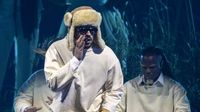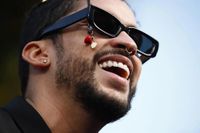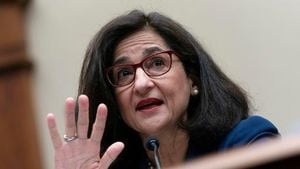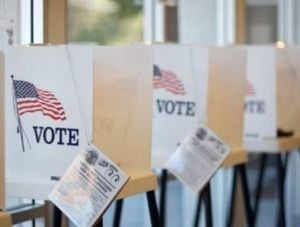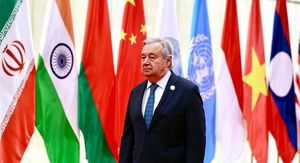In the summer of 2025, Puerto Rico has become more than just a Caribbean getaway—it’s the epicenter of a cultural and economic phenomenon powered by one of the world’s biggest music stars. Bad Bunny, born Benito Antonio Martínez Ocasio, has transformed his native island into a living mixtape, drawing hundreds of thousands of fans from around the globe. His three-month concert residency in San Juan, running from mid-June through mid-September, has ignited a tourism boom that’s reverberating through every corner of the U.S. territory’s fragile economy.
According to the Associated Press, the numbers are staggering. Nearly 600,000 people are expected to attend the concerts, with visitors coming not just for the music, but for a full immersion into Bad Bunny’s Puerto Rican roots. Hotels have responded in kind: nearly three dozen properties created special “Bad Bunny packages” that bundle concert tickets with curated tours and local experiences. The response was immediate and overwhelming—concert organizers reported that 25,000 of these packages sold out in a single day, generating close to $200 million for the island’s hospitality sector, Discover Puerto Rico told the AP.
It’s not just hotels seeing the windfall. More than 48,000 hotel nights were booked during the residency period, with reservations up 10% on July 27 compared to the same date last year. Short-term rentals surged too—42% higher in August and a remarkable 61% higher for September, compared to 2024. The influx of tourists also meant the island’s main international airport saw nearly 7% more flights from the U.S. mainland between July and September, as reported by aviation analytics company Cirium.
But what’s truly remarkable about this tourism surge is how it’s rooted in culture, not just sun and sand. As Ricardo Cortés Chico, a spokesperson for Discover Puerto Rico, put it, “We can argue that they’re the prettiest, but they’re beaches. What makes us unique is the culture. No one can steal that.” The focus has shifted from traditional attractions like El Yunque rainforest and Old San Juan to places that shaped Bad Bunny’s life: the Econo supermarket in Vega Baja where he once worked, his former high school, and the church where he served as an altar boy. Tourists line up to don red polyester vests and pose for photos where the superstar once wrangled shopping carts, soaking in stories from locals like Delza Vélez, Econo’s head of HR, who recalled, “He liked to be out there.”
For many fans, the journey is deeply personal. Eddie Villanueva, 23, traveled all the way from Switzerland with his father for what he called “the full Bad Bunny trip.” Their budget? Around $5,000, including $40 tickets for a tour of Vega Baja. “Delighted. Incredible,” the younger Villanueva told the AP, beaming after buying caps emblazoned with “PR” for Puerto Rico. They’re not alone—dozens of hotels, restaurants, and tour operators have seen their fortunes rise as visitors seek out every piece of Bad Bunny’s story.
The tourism boom isn’t just about big business. Local entrepreneurs and nonprofits have seized the opportunity to spotlight Puerto Rican heritage. The G8 collective, a nonprofit supporting impoverished communities in San Juan, launched a $25 guided bike tour called “Debí Tirar Más Fotos”—a nod to Bad Bunny’s latest album, which means “I should have taken more photos.” Another group, Acción Valerosa, teamed up with Los Pleneros de la Cresta to offer the “Café con Ron” tour in Ciales, a coffee-producing mountain town. The tour introduces visitors to traditional plena music and coffee farming, with proceeds earmarked for converting a former casino into a community center.
Even university students are getting in on the action. Julietta Dasilva, a longtime fan who flew in from Denver, opted for a $45 tour led by a local student over commercial options. “I want to do it right,” she told the AP, echoing the sentiment of many who want an authentic experience.
The impact stretches across the island. In Cabo Rojo, on Puerto Rico’s southern tip, hotelier Ángel Rodríguez has seen a 7% uptick in bookings, thanks in part to a dock painted with the Puerto Rican flag that featured in one of Bad Bunny’s music videos. Tourists even ask about the elusive Puerto Rican crested toad, which made a cameo in the artist’s visuals—though Rodríguez admits the toad is tough to spot.
Local businesses are thriving too. Restaurants like La Casita Blanca in San Juan, a favorite of Bad Bunny’s, now see two-hour waits as fans flock to eat where he once dined. Lines snake outside bodegas and souvenir shops, and boutiques have started designing T-shirts and hats inspired by his lyrics and image. Cocktails and menu items bear names from his songs, and even government officials—despite being targets of Bad Bunny’s political critiques—have embraced the boom, launching new tours and supporting local artisans.
Wilson Santiago Burgos, founder of the travel platform Mochileando, summed up the moment: “People are starting to produce things strictly from Puerto Rico.” He admitted he was surprised to see the government jump on board, given Bad Bunny’s outspoken criticism of the island’s political establishment, but the economic benefits were impossible to ignore.
For those guiding the tours, the transformation is both surreal and rewarding. Heidy Crespo, who leads tours in Vega Baja, said, “I never thought people would want to see where he worked. But I love it. I love seeing people’s eyes shine.” For tourists like Vicky Galvez, who flew in from Las Vegas with friends and spent over $2,400, it’s more than a concert—it’s a way to connect with the island’s people, food, and spirit. “I did shop local, and that was great,” she said, happy to wait for a table at a family-run eatery, knowing her dollars supported the community.
Bad Bunny himself has embraced his role as cultural ambassador. Night after night, he tells his audience: “This is the homeland that I love … I invite you to get to know it.” The message resonates, drawing fans beyond the stadiums and into the heart of Puerto Rico’s towns and traditions.
From supermarket parking lots to mountain villages, from packed hotels to bustling restaurants, the Benito Effect is everywhere. Puerto Rico is not just cashing in on a superstar—it’s showcasing its soul to the world, one concert, one meal, and one story at a time.
